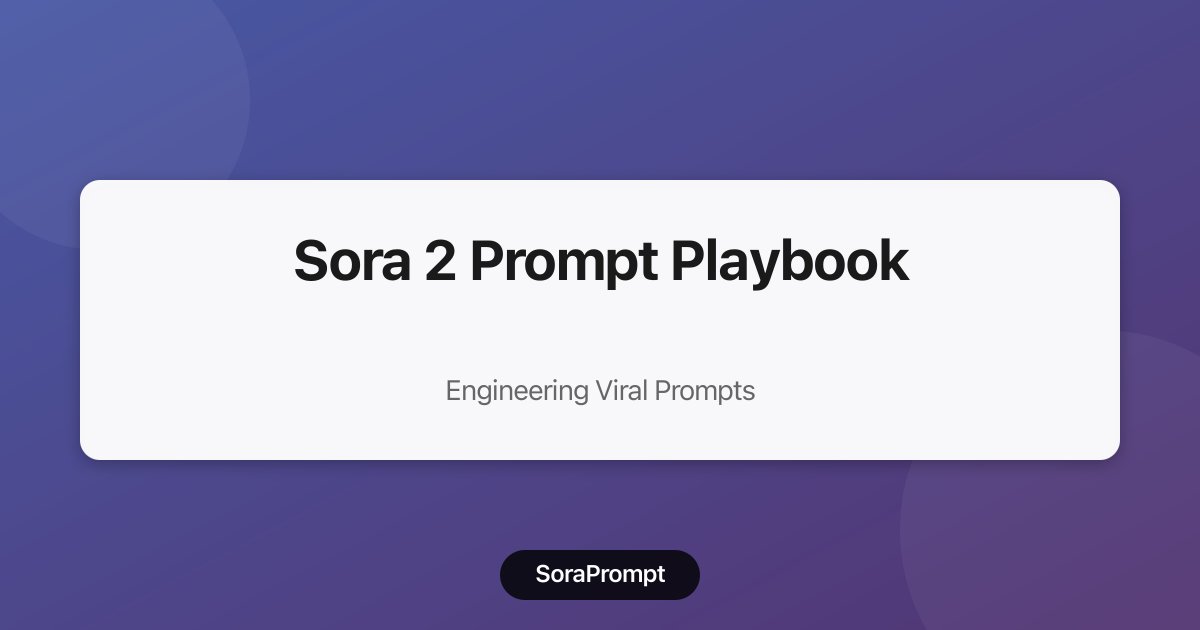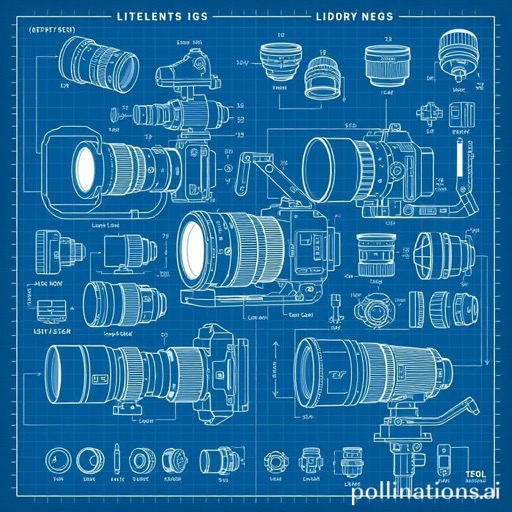
The Sora 2 Prompt Playbook: How Viral Prompts Are Engineered on Reddit and X
A practical guide to cinematic, physics-driven, and real-world prompts that travel fast.
Subtitle
A practical guide to cinematic, physics-driven, and real-world prompts that travel fast.
Over the past 48 hours, the most-shared Sora 2 prompts on Reddit and X cluster around four ideas: physics consistency, cinematic realism, personal/celebrity likeness, and storyboard-level camera direction. This guide distills those patterns into reusable templates and a checklist you can apply today.
What's Driving Virality
- Make physics observable: Prompts that specify material properties (viscosity, fabric weight), verifiable motion (shadows, refraction, rolling shutter), and macro detail are easy for viewers to "judge" as real or not.
- Cinematic minimalism: Fewer, more precise film terms—shot size, camera movement, light source/time, frame ratio—beat adjective soup. The cleaner the directive, the cleaner the aesthetic.
- "News/CCTV" realism: A documentary or surveillance tone (timestamp overlay, compressed audio, handheld shake) increases perceived authenticity and invites conversation.
- Social identity hooks: Uploading self-portraits or public figures—where allowed—boosts sharing and ethical debate. Use platform rules and permissions.
Four Prompt Archetypes (Copy-Paste Ready)
1) Cinematic Physics Stress Test (Liquid + High FPS)
In soft morning natural light, honey slowly pours into milk in a glass cup, macro close-up, 120fps slow motion, emphasize viscosity and laminar flow, shallow depth of field with optical bokeh, gentle color grade, ambient room tone with subtle liquid sounds, 16:9, lateral dolly right-to-left, highlight the filament stretch and break moment.2) Realistic CCTV / "News Clip" Tone (High social engagement)
Supermarket CCTV footage, nighttime cool fluorescent lighting, locked-off camera, slight rolling shutter artifacts, compressed ambient audio, timestamp overlay top-left, vertical 9:16, realistic crowd occlusion and paths; after subject exits frame, their shadow continues sliding on the wall; minor scuffle within 10s without facial close-ups.3) Film-Grade Storyboard (Light + Movement Control)
Golden hour on a city rooftop, start wide → push to medium → orbit 360° around subject, realistic volumetric clouds and warm rim light, lightweight fabric fluttering in wind, rack focus to distant neon then back to eyes, subtle film grain and halation, production audio: wind and distant traffic only.4) "Put Me in the Scene" (Self-portrait narrative)
Place me in a rainy Tokyo alley at night, neon reflecting on wet tiles, handheld phone POV with slight shake, high ISO realistic noise, hold on my profile for 2s then tilt down to puddle, clear ripples and shoe water trails, total 8s, end with a natural breath sound.The Anatomy of a High-Performing Sora 2 Prompt
- Shot grammar: Decide shot size (wide/medium/close), camera position (POV/over-shoulder/locked/dolly/orbit), motion (push/pull/tilt/pan/slide/lift), and duration (6–10 seconds often wins).
- Evidence of reality: Shadows (direction and persistence), reflections/refraction, microtextures (grain/noise/stitching), material behaviors (viscosity, fabric inertia, wind).
- Light and color: Specify time and source (morning natural light, fluorescent tubes, neon) and color intent (warm/cool, high contrast, film grain/halation).
- Sound matters: Even "silent" scenes benefit from a prompt that names ambient noise (room tone, wind, distant traffic, liquid sounds) to anchor realism.
- Frame ratio and platform fit: 9:16 for short-form feeds (TikTok/Reels/X vertical), 16:9 for YouTube/X posts. One-take shots are easier to watch and share.
Common Pitfalls (And How to Fix Them)
- Adjective overload: Replace "hyper-real, cinematic, beautiful" with measurable film terms (shot size, movement, light source, FPS). Less poetry, more production notes.
- No early action hook: Give viewers a micro-event within 2–3 seconds—a shadow glide, a rack focus, a splash ripple—to lift completion and share rates.
- Sound-image mismatch: Realistic footage with heavy, glossy music often feels fake. Use ambient and subtle foley to keep the illusion.
- Ignoring aspect ratio: If your target platform is vertical, prompt for 9:16 explicitly. Don't rely on post-crop; compose for vertical from the start.
A One-Page Prompt Template
Use this skeleton to draft quickly and consistently:
- Setting & Time: [place], [time of day], [light source]
- Subject & Action: [who/what], [micro-event within 2–3s]
- Camera & Movement: [shot size], [position], [movement], [duration]
- Optics & Texture: [DoF], [grain/noise], [bokeh/halation], [macro detail]
- Physics Evidence: [shadows/reflections/refraction], [material behavior]
- Sound: [ambient], [foley], [music or none]
- Aspect Ratio: [9:16 or 16:9], [one-take or cuts]
Example with the Template
- Setting & Time: Rainy alley, nighttime neon
- Subject & Action: Me, brief glance → tilt to puddle ripple
- Camera & Movement: Handheld phone POV, micro-shake, 8s one-take
- Optics & Texture: High ISO noise, shallow DoF, optical bokeh
- Physics Evidence: Shadow persistence on wall, water ripples and shoe trails
- Sound: Ambient rain + single breath at end
- Aspect Ratio: 9:16 vertical
Workflow Notes
- Start tight, then expand: Macro physics shots (liquid, fabric, glass) reveal model realism more than wide vistas. Hook early, then widen.
- Keep directives atomic: One clear instruction per line item reduces conflicts (e.g., specify one camera movement dominant).
- Iterate by evidence: If viewers doubt realism, add or adjust a measurable cue (shadow path, rolling shutter artifacts, timestamp overlays).
- Respect permissions for likeness: Follow platform and product rules for self-portrait or public figure usage. Use opt-in and local policies.
Closing Thought
Sora 2 virality favors prompts that feel like production call sheets—short, specific, and testable. The fastest path to shareable outputs is to script physics, light, and camera first, then add identity or narrative as a multiplier.
Author
Categories
More Posts

Sora 2 - Chapter 13: Multilingual Prompt Examples (10)
Sora 2 chapter prompts extracted from the Ultimate Prompt Library.

Sora 2 - Chapter 26: E-commerce Marketing
Sora 2 chapter prompts extracted from the Ultimate Prompt Library.

Sora 2 - Chapter 12: Extra Technique Prompts (20)
Sora 2 chapter prompts extracted from the Ultimate Prompt Library.